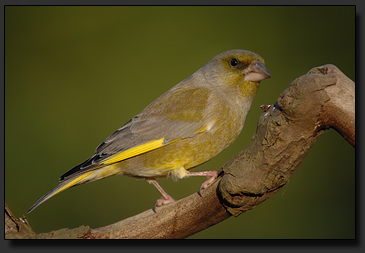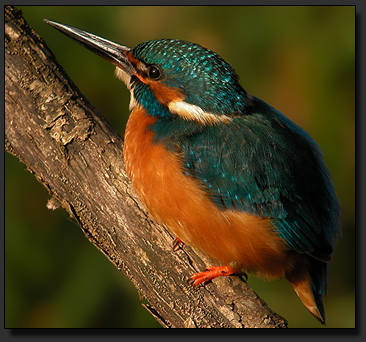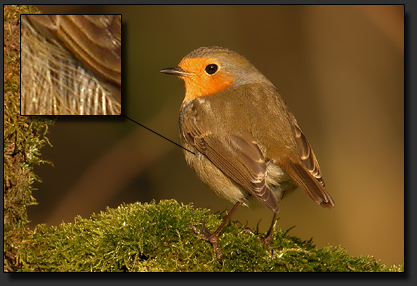Digiscoping with Kowa TSN-884 Prominar Spotting Scope
 use Zeiss, Swarovski
use Zeiss, Swarovski or
Leica Spotting Scopes. Kowa
or
Leica Spotting Scopes. Kowa scopes are only used by a minority. Some people here in Germany don't even know Kowa
scopes are only used by a minority. Some people here in Germany don't even know Kowa .
.I have seen so many great pictures in english birding- communities made through Kowa
 Spottin Scopes, that I really
wanted to use a Kowa
Spottin Scopes, that I really
wanted to use a Kowa Scope in practical experience.
Scope in practical experience.Now I've just had the possibilty to try out a Kowa
 TSN-884 Spotting Scope in terms of digiscoping
TSN-884 Spotting Scope in terms of digiscoping and
DSLR-Scoping. And what shall I say. It's just outstanding in contrast and sharpness, and I've never
photographed through a scope, that is so well corrected in terms of chromatic aberrations and colour.
and
DSLR-Scoping. And what shall I say. It's just outstanding in contrast and sharpness, and I've never
photographed through a scope, that is so well corrected in terms of chromatic aberrations and colour.It is indeed an absolutely High End optic.
I've had the possibilty to test the Kowa Prominar TSN-884 Spotting Scope
 with the Kowa
with the Kowa TE-10Z zoom eyepiece (20x-60x), the
Kowa
TE-10Z zoom eyepiece (20x-60x), the
Kowa TE-17W eyepiece (30x) and the Kowa TSN-PZ
TE-17W eyepiece (30x) and the Kowa TSN-PZ photo attachment adapter for DSLR
photo attachment adapter for DSLR with a focal length of 680mm-1000mm. For
me it was the first time to use a spotting scope in combination with a digital SLR.
with a focal length of 680mm-1000mm. For
me it was the first time to use a spotting scope in combination with a digital SLR.The first impression : The whole Kowa
 System is well thought-out. For almost every digital still camera you
get a compatible digiscoping
System is well thought-out. For almost every digital still camera you
get a compatible digiscoping adapter. The DSLR-System is also very easy to use.
adapter. The DSLR-System is also very easy to use.At first I tested the Kowa
 TSN-884 with some DSLRs from Canon and Nikon. All cameras worked great with the scope,
and the results are just fantastic in terms of sharpness, colour and contrast. I could't believe, that
I've made them through a scope and not through a high end telelens.
TSN-884 with some DSLRs from Canon and Nikon. All cameras worked great with the scope,
and the results are just fantastic in terms of sharpness, colour and contrast. I could't believe, that
I've made them through a scope and not through a high end telelens.The scope were even able to deliver the 12MP (!!) D2Xs with enough details. Lots of telelenses aren't even able to deliver enough details for this camera.
 Chaffinch
Chaffinch , photographed witht
, photographed witht
Canon EOS 400D and
Kowa TSN-PZ DSLR photo attachment and Kowa Prominar TSN-884 Spotting Scope
DSLR photo attachment and Kowa Prominar TSN-884 Spotting Scope .
.
 Prominar TSN-884 with DSLRs from Canon, like the Canon EOS 400D,
Canon EOS 10D
Prominar TSN-884 with DSLRs from Canon, like the Canon EOS 400D,
Canon EOS 10D and Canon EOS 40D
and Canon EOS 40D . With every camera the scope deliverd outstanding results. I use with DSLRs
the scope is like a manually operated telezoom with a fixed aperture (at 680mm f7.7, at 1000mm f 11.4). Some may
think the fixed aperture is a big disadvantage, but in the code of practise this disadvantage isn't worth talking
baout in most situations. Let me ask, which aperture would you choose in bird
. With every camera the scope deliverd outstanding results. I use with DSLRs
the scope is like a manually operated telezoom with a fixed aperture (at 680mm f7.7, at 1000mm f 11.4). Some may
think the fixed aperture is a big disadvantage, but in the code of practise this disadvantage isn't worth talking
baout in most situations. Let me ask, which aperture would you choose in bird photography. In mist cases it
would be f6.0 to f9.0. So the aperture of the Scope combined to DSLR is about in the mid range of the aperture
you would use anyway. Only in very bad light conditions you would think of the advantage of a variable aperture.
photography. In mist cases it
would be f6.0 to f9.0. So the aperture of the Scope combined to DSLR is about in the mid range of the aperture
you would use anyway. Only in very bad light conditions you would think of the advantage of a variable aperture.So coming to the cameras again. Manually focusing was easiest with the D2Xs - as I expected - caused by the wonderful viewfinder. But also with the Canon EOS 40D
 it was quite easy. To focus through the small
viewfinder of the Canon 400D was a little bit harder, but also possible (have a look at the photo of the chaffinch
it was quite easy. To focus through the small
viewfinder of the Canon 400D was a little bit harder, but also possible (have a look at the photo of the chaffinch ). And of course, after some practice
you get better and better in manually focusing after some practice.
). And of course, after some practice
you get better and better in manually focusing after some practice. Greenfinch
Greenfinch , photo taken with Nikon D2Xs + Kowa TSN-PZ
, photo taken with Nikon D2Xs + Kowa TSN-PZ DSLR-Photo-Attachment-Adapter through a Kowa Prominar TSN-884 Spotting Scope
DSLR-Photo-Attachment-Adapter through a Kowa Prominar TSN-884 Spotting Scope . With this combination focusing was easiest, cause of the huge viewfinder of the D2Xs.
. With this combination focusing was easiest, cause of the huge viewfinder of the D2Xs.
 TSN-884 seems to have the most authentic colours. With many other scopes, colours came out to warm, or in
some cases they had a green colour cast .
TSN-884 seems to have the most authentic colours. With many other scopes, colours came out to warm, or in
some cases they had a green colour cast .The contrast of the Kowa
 TSN-884 was stellar, too. I've never used a scope, which delivered such contrasty pictures. It's
a great adavantage compared to many other scopes. It makes focusing much easier when used with DSLR, compared to
scopes with less contrast. It's also a big adavantages if you use the Kowa
TSN-884 was stellar, too. I've never used a scope, which delivered such contrasty pictures. It's
a great adavantage compared to many other scopes. It makes focusing much easier when used with DSLR, compared to
scopes with less contrast. It's also a big adavantages if you use the Kowa for birdwtching. The contrastlevel seems
to stay at the same level when zooming in or out with the 20-60x eyepiece. With all my other scopes it's much
harder to identify birds
for birdwtching. The contrastlevel seems
to stay at the same level when zooming in or out with the 20-60x eyepiece. With all my other scopes it's much
harder to identify birds when viewing through the eyepiece at 60x Zoom.
when viewing through the eyepiece at 60x Zoom.
 100% Crop of a photo of a great tit
100% Crop of a photo of a great tit taken with Nikon D2Xs and Kowa
taken with Nikon D2Xs and Kowa TSN-884 using the Kowa TSN-PZ
TSN-884 using the Kowa TSN-PZ DSLR-photo-attachment-adapter. This photo would normally show all mistakes of an optic in terms of chromatic aberration. But have a look here, do you see any chromatic aberrations between the black/white ? I think it isn't possible to find a better corrected lens than this.
DSLR-photo-attachment-adapter. This photo would normally show all mistakes of an optic in terms of chromatic aberration. But have a look here, do you see any chromatic aberrations between the black/white ? I think it isn't possible to find a better corrected lens than this.
 almost never produced some of these
chromatic abberations. It's better corrected than most of the expensive lenses for digital SLR and it is better
corrected than all of the scopes I worked with !
almost never produced some of these
chromatic abberations. It's better corrected than most of the expensive lenses for digital SLR and it is better
corrected than all of the scopes I worked with !Please have a closer look at the contrast of the blue tit
 picture. For most scopes this would be a situation
when chromatic abberations surely would appear. But as you can see there's no chromatic abberation in
the picture at all. It's absolutely fascinating, how good the correction of the lens is.
picture. For most scopes this would be a situation
when chromatic abberations surely would appear. But as you can see there's no chromatic abberation in
the picture at all. It's absolutely fascinating, how good the correction of the lens is.And this isn't only a clear advantage for digiscoping
 or DSLR-Scoping, it's almost even greater, when observing
birds
or DSLR-Scoping, it's almost even greater, when observing
birds through the scope via your eye. Situations where you have to look against the great sky often
made it hard to identify birds
through the scope via your eye. Situations where you have to look against the great sky often
made it hard to identify birds , course of heavy abberations. With the 884 it isn't a problem
anymore.
, course of heavy abberations. With the 884 it isn't a problem
anymore.
 Digiscoped
Digiscoped with Kowa
with Kowa TSN-884 scope. Even in terms of digiscoping
TSN-884 scope. Even in terms of digiscoping the TSN-884 is just great. The 20-60x zoom has been used here.
the TSN-884 is just great. The 20-60x zoom has been used here.
 DSLR attachment adapter and scope. I was surprised by the
perfect quality of the resulting photos and I never expected such quality pics from DSLR-Scoping. It's almost
the same quality as when you photograph with DSLR and manual High End telelens, the only difference is the
fixed aperture of the scope of 7.7 at the wide end of the zoom and 11.4 at the tele end of the zoom. And that's
exact the aperture I would use with an telelens in most cases, too.
DSLR attachment adapter and scope. I was surprised by the
perfect quality of the resulting photos and I never expected such quality pics from DSLR-Scoping. It's almost
the same quality as when you photograph with DSLR and manual High End telelens, the only difference is the
fixed aperture of the scope of 7.7 at the wide end of the zoom and 11.4 at the tele end of the zoom. And that's
exact the aperture I would use with an telelens in most cases, too.But even in terms of digiscoping
 (digiscoping
(digiscoping mean to photograph with a digital still camera through the eyepiece of
an telescope / spotting scope) the results were very good. The pics are very contrasty, in some cases e.g. when
photographing the kingfisher
mean to photograph with a digital still camera through the eyepiece of
an telescope / spotting scope) the results were very good. The pics are very contrasty, in some cases e.g. when
photographing the kingfisher just a little bit too contrasty. The Kowa
just a little bit too contrasty. The Kowa Scope delivers a huge amount of details, I've
never seen that with any scope before. Every little feather-detail is shown in the pics.
Scope delivers a huge amount of details, I've
never seen that with any scope before. Every little feather-detail is shown in the pics.
 European Robin
European Robin , photographed with the digiscoping
, photographed with the digiscoping technique. In the original picture (as you can see in the crop) every little feather can
be seen clearly
technique. In the original picture (as you can see in the crop) every little feather can
be seen clearly
 is very good, too and as good as other top-of-the-line scopes. In Digiscoping
is very good, too and as good as other top-of-the-line scopes. In Digiscoping and as well in
DSLR-Scoping I have nothing to complain about sharpness.
and as well in
DSLR-Scoping I have nothing to complain about sharpness.Next to the optical performance the handling is great, too. The focus-wheel is very easy to use and the fine-focus-wheel gives you possibility to focus exact within millimeters. So it's no problem to get exactly the yey of your model into focus.
The weight is ok for a scope with 88mm lens diameter, so you can use it even at longer birding-tours.
So what I'm missing ? I miss a little target, to get the birds
 into my view, especially when digiscoping
into my view, especially when digiscoping it's
a little bit hard to find the bird
it's
a little bit hard to find the bird in the screen of the camera. But most other scopes don't have a better
system either.
in the screen of the camera. But most other scopes don't have a better
system either.Conclusion : If you have a look at the pictures, a conclusion is unneccessary. The pictures speak for itself I hope. But ok, here a summary :
- A very perfected digiscoping
 system in terms of digiscoping
system in terms of digiscoping and DSLR-Scoping. With the available Kowa-Adapters ans special eyepieces
you can combine most of the digital kompact cameras to the scope
and DSLR-Scoping. With the available Kowa-Adapters ans special eyepieces
you can combine most of the digital kompact cameras to the scope - Very perfected sytem in terms of DSLR-Scoping. Use the TSN-PZ
 (680-1000mm) for APS-C format dslrs and the fixed
dslr-adapters
(680-1000mm) for APS-C format dslrs and the fixed
dslr-adapters for full frame dslrs.
for full frame dslrs. - chromatic aberrations a perfectly corrected. It's hard to provoke some
- Very good contrast, seems to be the scope with the best contrast at the market - even at higher magnifications the contrast is great
- Very detailed pics, high resolution
- Good sharpness, almost or even as sharp as my old Swarovski ST80HD

- Very good handling, I loved the fine-focus wheel
- for an 88mm diameter scope - good weight and well balanced
- very lightintensitiv
- is able to deliver a 12MP sensor of a d2xs with enough details. Even some expensive telelenses can't deliver as many details
All things considered I never was so enthusiastic about a scope. In my opinion absolutely recommendable, in the photography and as well as during birdwatching tours.
For picture taken with the scope, click here : Kowa

For more infos about the Kowa-System click here : Acctiver Optik
 - Seeing without compromises (german language)
- Seeing without compromises (german language)
Regards
Gerd Rossen
Article from 2009-08-08
Copyrights
All photographs, graphics and written text published on this domain and all its subdomains
are copyrighted by Gerd Rossen.
Reproduction or use in any manner without
the authors permission is prohibited.
New Galleries :
- Siberian Tit
- Eurasian Woodcock
- Flower Crab Spider
- Pine Grosbeak
- Spiny Puffball
- Scarlet Elf Cap
- Roundhead (S.squamosa)
- Elfin Saddle
- Ballpen
- Flagpoles and Flags
- Alder Moth

